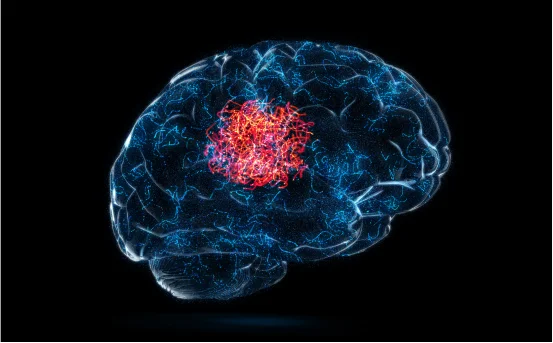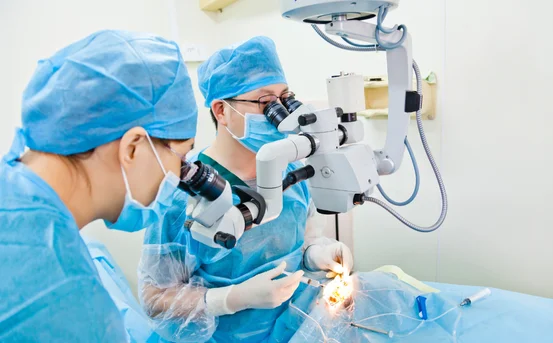Causes of temporal lobectomy is a neurosurgical procedure that involves removing part or all of the temporal lobe of the brain. While the idea of brain surgery may sound alarming, temporal lobectomy is a proven and often life-changing treatment for certain neurological conditions, especially when medications fail to provide relief. Understanding the causes behind the need for temporal lobectomy helps patients, caregivers, and healthcare professionals make informed decisions about treatment paths.
The brain is a complex organ made up of various regions, each with specialized functions. One of these critical areas is the temporal lobe, located on the sides of the brain just above the ears. This part of the brain plays an essential role in language comprehension, auditory processing, memory formation, and emotional regulation. When something goes wrong in the temporal lobe whether due to structural damage, abnormal brain tissue, or ongoing seizures it can lead to serious neurological symptoms that disrupt daily life.
What is a Temporal Lobectomy?
A temporal lobectomy is a surgical procedure to remove a portion of the temporal lobe a region of the brain located near the temples on each side of the head. This area plays a vital role in memory, speech, hearing, and emotions. The procedure is most commonly performed to treat medically refractory temporal lobe epilepsy (TLE), which does not respond to anti-seizure medications.
Temporal lobectomy is usually carried out by a skilled neurosurgeon after comprehensive neurological evaluation, imaging studies, and other diagnostic procedures.
Primary Causes of Temporal Lobectomy
Temporal Lobe Epilepsy (TLE)
The most common reason for a temporal lobectomy is temporal lobe epilepsy, a condition where seizures originate from the temporal lobe. When anti-epileptic drugs (AEDs) fail to control seizures commonly after trying two or more medications it is termed drug-resistant or intractable epilepsy.
Why surgery is considered :-
-
Seizures interfere with daily life and increase the risk of injury.
-
Uncontrolled seizures can cause long-term brain damage.
-
Temporal lobectomy can significantly reduce or even eliminate seizures in eligible patients.
Studies show that up to 70-80% of patients become seizure-free after surgery for temporal lobe epilepsy, making it one of the most successful epilepsy surgeries.
Mesial Temporal Sclerosis (MTS)
Mesial temporal sclerosis, also called hippocampal sclerosis, is a specific condition that leads to scarring of the hippocampus a critical structure in the medial temporal lobe. MTS is a leading cause of TLE and often begins in childhood or adolescence.
Symptoms and complications :-
-
Repeated focal seizures
-
Memory problems
-
Anxiety or mood disturbances
If MTS is confirmed through MRI and EEG studies, and medications don’t control the seizures, temporal lobectomy targeting the sclerotic area is often the most effective treatment.
Brain Tumors in the Temporal Lobe
A benign or malignant tumor in the temporal lobe may lead to seizures, headaches, or neurological deficits. Tumors such as astrocytomas, gliomas, or gangliogliomas located in this area can irritate the surrounding brain tissue, leading to epilepsy or cognitive issues.
When temporal lobectomy is necessary :-
-
The tumor is confined to the temporal lobe.
-
The tumor causes seizures or interferes with nearby brain function.
-
Complete or partial removal of the affected temporal lobe offers a chance for cure or improved quality of life.
In some cases, tumor resection may be performed alongside or instead of a standard lobectomy, depending on the size, type, and location of the mass.
Traumatic Brain Injury (TBI)
A significant blow to the head, especially affecting the temporal region, may result in localized brain damage, bleeding, or scar formation that triggers seizures later in life. If post-traumatic seizures become chronic and unmanageable, and if imaging shows a localized epileptic focus in the temporal lobe, a lobectomy might be considered.
Cortical Dysplasia
Focal cortical dysplasia (FCD) is a developmental abnormality where areas of the brain cortex don’t form properly during fetal development. This can become a trigger for seizures, especially in children and young adults.
If the dysplastic region is in the temporal lobe and causes severe, drug-resistant epilepsy, surgical resection can lead to improved seizure control and better developmental outcomes.
Infections and Inflammatory Conditions
Certain infections like herpes simplex encephalitis, or inflammatory brain diseases such as autoimmune limbic encephalitis, can affect the temporal lobe. These conditions may lead to permanent damage or scarring, predisposing individuals to chronic seizures.
If medications and immune therapies fail, and the seizures are disabling and linked to the damaged part of the temporal lobe, surgery may be the best option.
Signs and Symptoms Leading to a Temporal Lobectomy Diagnosis
A person is not immediately considered for a temporal lobectomy based on seizures alone. Several clinical symptoms and diagnostic tests must point to the temporal lobe as the source of the problem. Common signs that may suggest temporal lobe involvement include :-
-
Recurrent seizures with aura (smells, déjà vu, fear)
-
Memory difficulties
-
Auditory hallucinations or strange sounds
-
Changes in mood or behavior
-
Inability to understand language (if dominant temporal lobe is affected)
Neuroimaging tests like MRI, CT scans, and functional studies such as EEG, SPECT, and PET scans help pinpoint the exact seizure focus or lesion in the temporal lobe.
Who is a Good Candidate for Temporal Lobectomy?
Not everyone with temporal lobe issues is a candidate for lobectomy. The ideal candidate :-
-
Has drug-resistant temporal lobe epilepsy
-
Shows clear evidence of a seizure focus in one temporal lobe
-
Does not have major memory or language function in the same lobe (especially on the dominant side)
-
Has been evaluated in a comprehensive epilepsy program
-
Is in good general health to tolerate surgery
In some cases, pre-surgical evaluation includes a Wada test (to assess language and memory dominance), neuropsychological testing, and invasive EEG monitoring to ensure the procedure is safe and effective.
Risks and Outcomes of Temporal Lobectomy
As with any brain surgery, temporal lobectomy comes with risks, including :-
-
Memory impairment (especially verbal memory if the left temporal lobe is involved)
-
Visual field defects
-
Mood changes or depression
-
Language difficulties
-
Infections or bleeding
However, when performed by experienced neurosurgeons and after thorough preoperative evaluation, the success rate is high. As mentioned earlier, 70-80% of patients experience complete seizure freedom, and many others have significantly reduced seizure frequency.
Conclusion
Temporal lobectomy is a well-established and effective procedure primarily performed to treat medically refractory temporal lobe epilepsy and related conditions such as mesial temporal sclerosis, brain tumors, traumatic brain injury, and cortical malformations. The decision to undergo a lobectomy is made after extensive diagnostic evaluation and when non-surgical treatments fail to offer relief.























